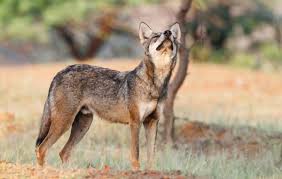Delhi : The recent wolf attacks in Bahraich district of Uttar Pradesh have led to the tragic death of over six people and injuries to more than 25 others. This alarming surge of attacks has stirred fear among 35 villages and promoted urgent action from the local authorities. However, as the community grapples with the immediate threat, itтАЩs crucial to understand the border context of wolf behavior and their ecological role.
The current situation
The UP-Forest Department is conducting тАШOperation BhediyaтАЩ to catch all the man-eating wolves. Recent developments include the capture of the fifth wolf, they are still in search of the last one. On Wednesday, September 11, an elderly woman Pushpa Devi was attacked by the wolf at night. It grabbed her by the throat. She is currently undergoing treatment in Bahraich District Hospital. A few days ago, Chief Minister Yogi Adityanath intervened, holding a press conference with district magistrates, police captains, and forest officials to assess and address the situation.
Wolves and their role in nature
Wolves, often portrayed as aggressive predators, have a complex relationship with humans. Historically, they were seen as threats to human safety and resources, leading to widespread hunting. In North America, aggressive campaigns against wolves led to their near extinction in several areas, including Yellowstone National Park by 1926.
However, wolves are rarely aggressive toward humans. A report by The Norwegian Institute for Nature Research documented 489 тАЬrelatively reliableтАЭ wolf attacks across 21 countries, including India, between 2002 and 2020. Of these incidents, only 26 resulted in fatalities. Notably, approximately 380 of these attacks were attributed to rabies. Biologists who study wolves in the wild report that these animals typically avoid human contact and only act aggressively under extreme conditions.
Ecological impact and conservation efforts
The decline of the wolf population has had profound effects on the ecosystem. Today, barely 2,000-3,000 wolves remain in India. Indian wolves are the oldest wolf lineage, found only in India and Pakistan. Efforts to reintroduce wolves in various parts of India are supported by different organizations to restore the natural ecosystem.
In US, Yellowstone National Park, wolvesтАЩ absence led to the overpopulation of species such as elk, which disrupted the balance of the habitat. Elk overgrazed on vital vegetation, affecting other species like beavers. Reintroducing wolves into such areas has shown positive results, restored ecological balance and benefiting other wildlife.
Addressing the Crisis in Uttar Pradesh
The recent attacks in Uttar Pradesh have sparked a renewed focus on how to manage and mitigate human-wolf conflicts. Historical data from the 1990s shows that such attacks have occurred sporadically, primarily affecting children. Addressing this issue involves not only immediate safety measures but also long-term strategies to understand and manage wolf behavior.
Community education, improved wildlife management practices, and habitat conservation are essential components of a comprehensive approach. Engaging with local communities to raise awareness and develop effective prevention strategies can help reduce conflicts and ensure a safer coexistence.







